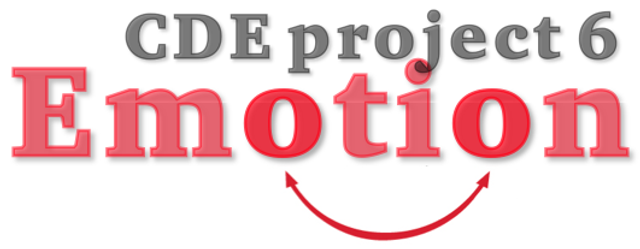CDE project 6 section 1b: introduction.
- Written by
- The Commission on the Donor Experience
- Added
- April 01, 2017
Welcome to CDE project 6, the use and misuse of emotion
Click here for the full contents for project 6: the use and misuse of emotion.
Section 1
An introduction to emotional fundraising
And why fundraisers everywhere should aim to be very good at it
by Ken Burnett.
It’s hard to control our emotions, but it’s very easy for emotions to control our thoughts.
Joseph LeDoux
Emotion plus integrity equals brilliant fundraising.
Alan Clayton
Though emotions and how and why the human brain works are beyond complicated, emotional fundraising isn’t rocket science. The first thing you have to grasp is that emotions are far, far more powerful and faster than logic – hundreds of times faster and more powerful – and that as giving isn’t a logical thing to do anyway, fundraising is almost invariably and inevitably driven by emotion.
A quick glance at a range of key charity communications – annual reports, newsletters, websites, cases for support and so forth – could easily convince you of the opposite. They’re routinely stuffed with diagrams, charts and tables wrapped around with dense paragraphs of dull, uninviting, often impenetrable descriptions. They go on too long and are often of questionable value in binding donors to any cause.
Don’t get me wrong, I’m not suggesting for a moment that the logical, well-reasoned case for support isn’t vital. It is. But it pays to keep the logical bit short, clear and unarguable. Easily available at the side rather than central, at the heart. The rational case for giving should be watertight, always be accessible and always offered, but it is what it is so will rarely make the difference. What will succeed or fail at engaging the donor is almost invariably the emotional WHY, told well. It’s the story that you use to draw donors in and inspire their passion and commitment so that, come what may, they’re with you, your cause is their cause and they’ll do their bit to make sure it prospers, so they can be the difference they want to see.
It’s no surprise. Add emotion to your message and you add impact, memorability, retention, engagement, understanding and action. For a fundraiser, it makes no sense whatever to leave it out. So, we do need to grasp this thing, emotion, so we can get very, very good at using it to give donors a consistently brilliant experience.
Of course, charities don’t have exclusive access to or use of emotions. Other sectors use them often and at least as well, at times perhaps better. Have a look at this short video from Thai Insurance.
Fundraisers should be aware of this; the best use of emotion may not be ours. We should set ourselves to changing that.
Follow the link above to see video 1.2. Unsung Hero, plus quite a few more examples of good and bad communication from both for-profits and not-for-profits, in the video section of the emotional fundraising showcase.
Emotions are why people do something. Logic, statistics, facts and detailed explanations are all why they stop, think and, quite often, find reasons not to do something. Of course, the case for support is important and should be there, complete, succinct, impressive and easy, with the truly necessary detail included. But as a communicator you’ll appreciate that most organisations don’t just stop there. Information, as you know, is putting out, whereas communication is getting through. Most organisations produce mountains of information and, sadly, very little communication.
So, if you want to engage and inspire people, to take them quickly, memorably and effectively right inside the essence of your cause, you need to learn to use emotion effectively. And because emotions are so powerful and complex and because you care about your donors and their comfort and well-being, you need to use emotions in your messaging responsibly, honestly and with exemplary care. Really, we do need to be good at this thing, emotion.
That’s what this project is all about. Tom Ahern says Jeff Brooks has found that photos of sad kids raise 50 per cent more than photos of either happy kids or neutral kids. So, this isn’t small stuff. But of course, it isn’t that simple.
How donors view emotion in fundraising
More detailed views from donors on the subject of emotion will be found in section 4, emotion and donors. The following finding from CDE’s wide-ranging 2016 Donor View survey gives this particular bit of food for thought.
4a. Thinking about the last charity supported, did you feel emotionally blackmailed?
- Agree – 23% (men 20%, women 25)
- Neither – 18%
- Disagree - 56% (men 62%, women 56%)
The above insight seems to confirm that most donors are not uncomfortable with how charities use emotion. But there’s not much comfort for fundraisers in realising that nearly a quarter of donors are feeling quite bad about the experience and many others are sitting on the fence.
The UK’s Disasters Emergency Committee (DEC) illustrates well how many donors view highly emotional appeals. Donors love the fact that the DEC is made up of 13 major aid agencies all poised to work together the instant a disaster hits. That’s practical and sensible. Similarly, they’re well aware that when a major disaster occurs anywhere in the world, at any time, DEC is the vehicle through which they can give instant effective help. So, the logic for giving to DEC is securely in place. Donors are already primed to give when asked. Confidence in the organisation, trust and the propensity to give are all already there. All these donors need now is news of the disaster, its scale and impact – the emotional reason to give. This may come via a single news image, a radio or TV bulletin, a press ad or short film clip, or a text to phone or tablet, all as soon after the event as possible with just a dramatic headline or call to action and, if possible, a human survivor story from the scene plus news of aid already on its way.
Then – providing you’ve made responding easy, via multiple channels – the people give, generously and unhesitatingly. For fundraising to work at optimum the logic that reinforces their decision should be securely, almost invisibly, in place. But without the right emotional message at the right time, giving will be greatly reduced. Increasingly fundraisers need to make good use of this if they are to inspire rather than persuade.
That’s why fundraisers need to get better at how they use emotion. And to take care that they don’t misuse it too. That’s what this project is all about.
It may however prove impossible to please everyone, so fundraisers have to aspire to do the right thing themselves. Regulation in this area will be of little help. You need to know, for yourself, what’s the right thing you should do in a range of situations. This is where a hard core of integrity will help. It should run not just through you but through your organisation too, part of its DNA.
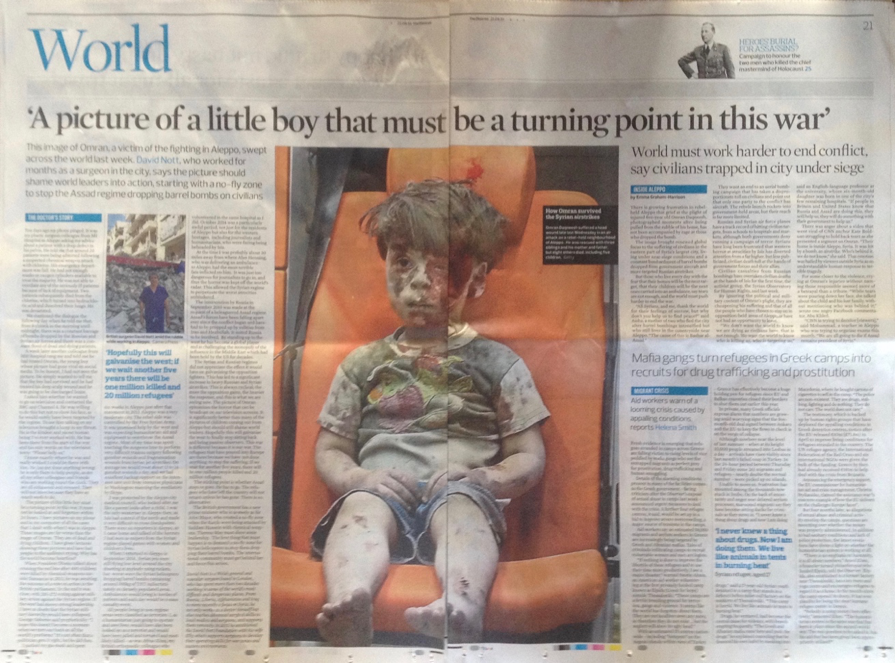
Emotions are undeniably super-powerful. The double page feature above from The Observer of August 2016 shows the power attributed even by seasoned journalists to a single emotive image. The headline describes it as ‘A picture of a little boy that must be the turning point in this war.’
Oh, if only…
Sadly, tragically, it wasn’t. Powerful, indelible and transformational though such images often are, their appearance all too often doesn’t have the impact we think they should. In section 5 campaigner Lyndall Stein reviews the decision to use a single image that surely is an icon of our times, the photograph of the lifeless corpse of three-year old Alan Kurdi, a Syrian toddler washed up dead on a foreign unfriendly shore, face down, his brightly coloured shorts and tee-shirt crumpled around his tiny frame like a discarded rag doll. Such was this photograph’s impact there were hopes that the public mood might change, for good, or at least for long enough to move politicians to take action to stem the biggest tide of fleeing refugees since the great wars of the last century. But widespread though it was, the sentiment was short lived. These images, the emotions they unleash and the decisions and dilemmas of those who deploy them are explored in several contributions to sections 4 and 5, particularly from Jenny-Anne Dexter, Steven Dodds, Suzi Attree and Lyndall Stein.
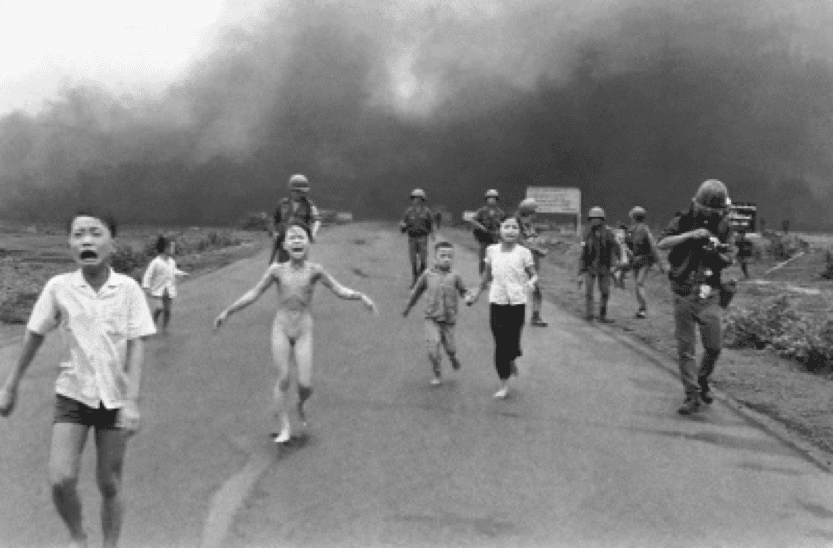
Correctly and carefully used images such as those that our causes have daily access to can change the course of history, can be spectacular tools for good. When successfully married to powerful words in stories and summaries showing the differences that donors daily make, emotional words and pictures can indeed open hearts and minds, building passionate commitment as they channel anger, suspense, hope, fear, horror, despair and joy.
To help in the big task of preparing this project I have enlisted contributions from some of the finest minds and most experienced professional inspirers active in the fundraising arena today.
Francesco Ambrogetti, Dr Kiki Koutmeridou and Alan Clayton introduce you to the science of emotions; Sharon Comfort and Lauren Semple share the secrets of emotional conversations; Mark Phillips explains a practitioner’s view to illustrate the creative use of emotions; Jenny-Anne Dexter, Dr Suzi Attree and Lyndall Stein, practicing professional fundraisers all, each give their take on the power and persuasiveness of emotional fundraising and Jayne George personifies the impact of an effective emotional leader. Steven Dodds and colleagues challenge us to use our professional skills to change the way the public views conflict emergencies, in contrast to how they generously and emotionally respond to natural disasters. Tesse Akpeki sheds light on the emotional board, Lisa Robinson describes an inspirational emotional event and Tammy Zonker shares inspiration from an emotional major donor. Greg Warner attempts a rewrite of a very unemotional letter while Andrej Naricyn shares an email that months later still stops him in his tracks. Jen Love caps it all with a view on emotional intelligence, while Jeff Brooks, Russell Benson and Brock Warner share their different takes on the most influential skill of all, emotional storytelling.
How and why emotion works is detailed in section 3 while selected examples of great emotional storytelling are available in section 2, the Emotional Fundraising showcase. The full content we’ve compiled for you for this project can be accessed here, https://goo.gl/c5Gzff.
Plus, you’ll find dozens of tips and helpful hints on making emotional fundraising work in your charity. There’s so much good stuff in this project that I won’t delay you long in getting to it. But before I let you go, I should explain something.
A great big caveat and a plea for understanding
People rarely know what they're talking about when they refer to emotions.
Dan Hill,
Emotionomics
At the start of almost every great enterprise there’s ever been, someone somewhere invariably stepped in saying, ‘be careful, aim lower, you’re biting off more than you can chew’.
Ken Burnett, lead on CDE’s project 6, the use and misuse of emotion
In an endlessly huge subject, Dan Hill’s comment above seems a good place to make this point, right at the start. Maybe we don’t need to know too much about emotions, just to accept that they are there, that we can’t easily control them and that they work much faster and more powerfully than logic. I don’t believe that’s nearly good enough. It’s precisely because emotions are so complex, powerful and so central to our viability and credibility that we fundraisers really need to grasp the subject much more effectively and with more sophistication than we have in the past. That we are amateur newcomers to a complex province is not a justification for leaving this to others, or to chance.
My caveat is that this project is not an expert work and doesn’t aspire to be one. It is, inevitably, a selective compilation of available and commissioned examples, opinions and information from a number of sources, pulled together by an amateur enthusiast in the field of emotions who’s also a seasoned professional practitioner of some decades in the field of donor relationships. I am not an expert and have no desire to pose as one since many years ago I realised that Noah’s Ark was designed by an amateur, while the Titanic was designed by an expert. I first said this 25 years ago in my book Relationship Fundraising. I’ve since learned that amateurs often pick up just as many valuable, hard-won lessons as do professionals.
A little knowledge can be a dangerous thing. So, as an uneducated arriviste I tread with trepidation into a subject as massive, diverse, difficult and controversial as the use and misuse of emotion to help raise money from great people for good causes. I’m reassured, though only a bit, by the fact that most who stray into this arena are also only too painfully aware that understanding of some of the issues here is still in its relative infancy. In exploring such a complex, challenging, still largely uncharted subject we may be no more than skirting the foothills, with vast unexplored areas beyond.
So, these are simply a collection of practitioners’ observations, no more, no less. I hope you’ll find them useful and that they’ll chime with your own experience and observations. Please say so or equally please challenge anything that jars. It’s only by doing so that we can advance the sum of knowledge in these areas and so penetrate beyond the foothills into a hopefully rich and rewarding interior, where we’ll make fresh discoveries that together will add to an improved experience for donors.
The study of emotions is always changing, a work in progress. Our understanding of emotion is evolving, as is understanding of the link between emotions and how we plan and think.
Francesco Ambrogetti
For the purposes of this project I accept we can’t begin to know all we should. At the Commission on the Donor Experience we don’t have the people or the resources to do this properly. But that doesn’t mean we shouldn’t do the best we can with what we’ve got.
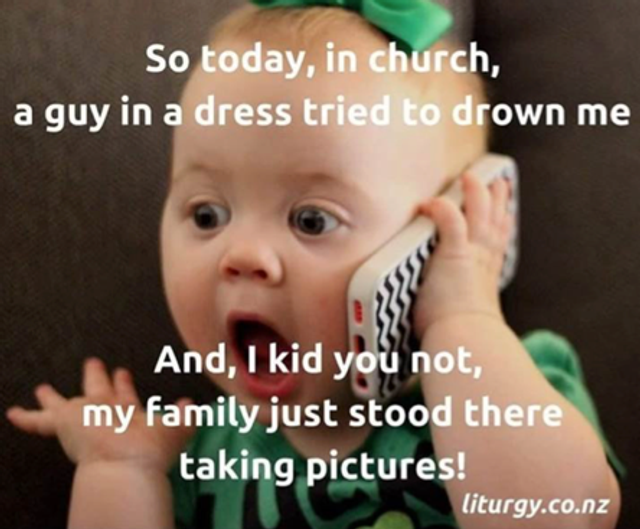
Some people will always see things differently, of course. Not everyone will agree. But hopefully given patience, time and understanding we can all unite around a way forward that works for everyone, particularly donors.
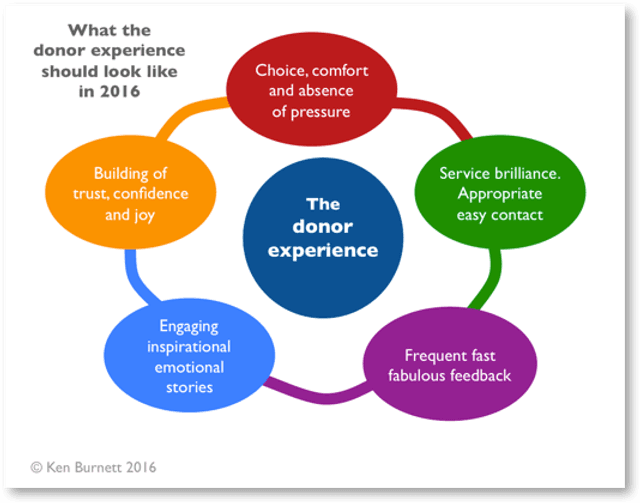
Inspirational emotional stories have always been a cornerstone of effective fundraising. There are plenty of signs that they are becoming even more essential.
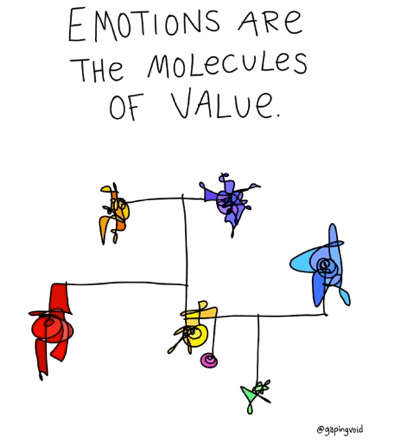
For this project I’ve pulled together contributions, insights, thoughts and observations from many very clever people, borrowed from several learned tomes and expert sources, numerous interesting and thought-provoking articles, film clips, videos, slide shows, talks and anything else of value that I could lay my hands on. I’ve probably misquoted some things, glossed over others and got more than a few bits plain wrong. This is not the last word on emotion, far from it. It is intended that this project should be a living, evolving thing – a true work in progress. Please add to it, for the benefit of those that come after you. If you have anything you can contribute that will advance this subject and the body of knowledge we should share on it, please do get in touch and submit your work. In this way we’ll all benefit, particularly our donors and our colleagues to come and, through them, the great causes that we all exist to serve.
Let me stress: this project is a work in progress
Because the use and misuse of emotion is a new, vast and important subject for fundraisers, so this project is significantly larger than other CDE projects. It has more around 40 contributors and nearly 100 individual components. Such a vast, crucial field demands detailed study and that fundraisers take it seriously.
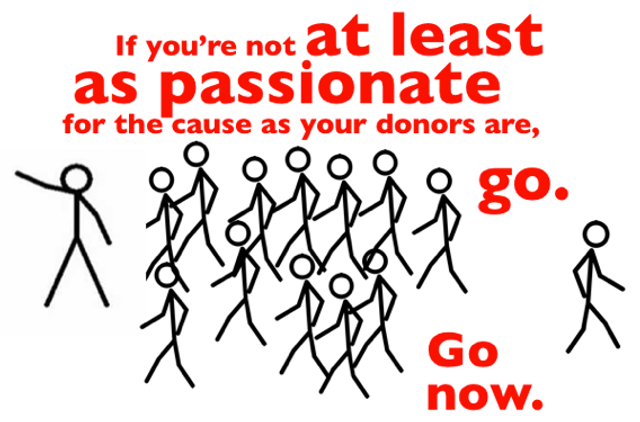
There is a secondary purpose in creating a large project. None of CDE’s projects aspire to constitute the last word in their field. All are therefore, by definition, both works in progress and simply summaries, distilled wisdom with a huge hinterland of knowledge and experience behind them, on which they are based.
The scale and breadth of this project is intended to act as a prompt to other projects, to show that there is still so much more to add to our knowledge and understanding of what cumulatively produces a great donor experience and to encourage the coming generation of fundraisers to rise to embrace the task. We owe nothing less to our donors and our beneficiaries, as well as to the great causes that we represent.
Thank you.
With particular thanks to my co-contributors:
Francesco Ambrogetti, Dr Kiki Koutmeridou, Alan Clayton, Sharon Comfort, Lauren Semple, Mark Phillips, Jenny-Anne Dexter, Dr Suzanne Attree, Russell Benson, Lyndall Stein, David Pastor and Clair Bedford, Jayne George and colleagues, Steven Dodds, Kate Woodford and Joel Du Bois, George Orwell, Tesse Akpeki, Brock Warner, Tammy Zonker, Greg Warner, Andrej Naricyn, Jen Love, Jeff Brooks, Rory Green, Craig Linton, Paul Stein, Lisa Robinson, Richard Turner, Roger Craver and Tom Belford at the Agitator and all at SOFII, Wikipedia, Adam Willis, Matthew Sherrington, Richard Spencer and Giles Pegram CBE.
With great authority, passion and generosity these experts contribute and convey their insights, explanations and understanding of the key components of emotions – why they matter, how they work, how to make the most of them, what benefits they’ll bring, what to watch out for and heaps more besides. I am forever indebted to them, and confident you will be too.
I hope you enjoy this project, that you find it insightful, practically useful and inspiring. And emotional, even.
Ken Burnett, 24 January 2017

With huge thanks to Hugh MacLeod and gapingvoid.com for the inspirational and transformational short quotes they send me, just a few of which I’ve borrowed for this project. The gapingvoid site is a treasure trove of art that, they believe, expresses ideas, vision, beliefs, culture and purpose faster, better and more deeply than any other method of business
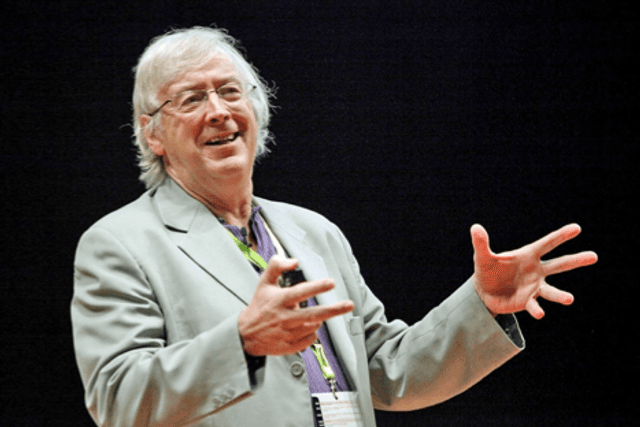
Ken Burnett, lead on this CDE project 6 on the use and misuse of emotion, is a writer, communicator and inspirational speaker. He is author of several influential books on donor development and communication, including Relationship Fundraising, the Zen of Fundraising and Storytelling Can Change the World. He has worked as a professional fundraiser since 1977. https://goo.gl/pFvk5g





